20 JUNE 2022
YOUR WORDS
Readers are invited to add their comments to any story. Click on the article to see and add.
BTN DISTRIBUTION
BTN also goes out by email every Sunday night at midnight (UK time). To view this edition click here.
The Business Travel News
PO Box 758
Edgware HA8 4QF
United Kingdom
info@btnews.co.uk
© 2022 Business Travel News Ltd.
Article from BTNews 20 JUNE 2022
ON TOUR: Spain and Portugal
Europe’s western seaboard is a popular destination for cruise ships whether venturing south from the UK, or starting from Barcelona. My recent Carnival Pride holiday began and finished at Spain’s principal port writes Editor-in-chief Malcolm Ginsberg. Many operators offer similar packages.
See BTN 16 May ON TOUR: Carnival Pride and 23 May ON TOUR: In retrospect – Carnival Pride.
PORTIMÃO on the Algarve was the first port of call with access to the small town by tender and then a short walk to the landing stage for the Benagil Caves boats. 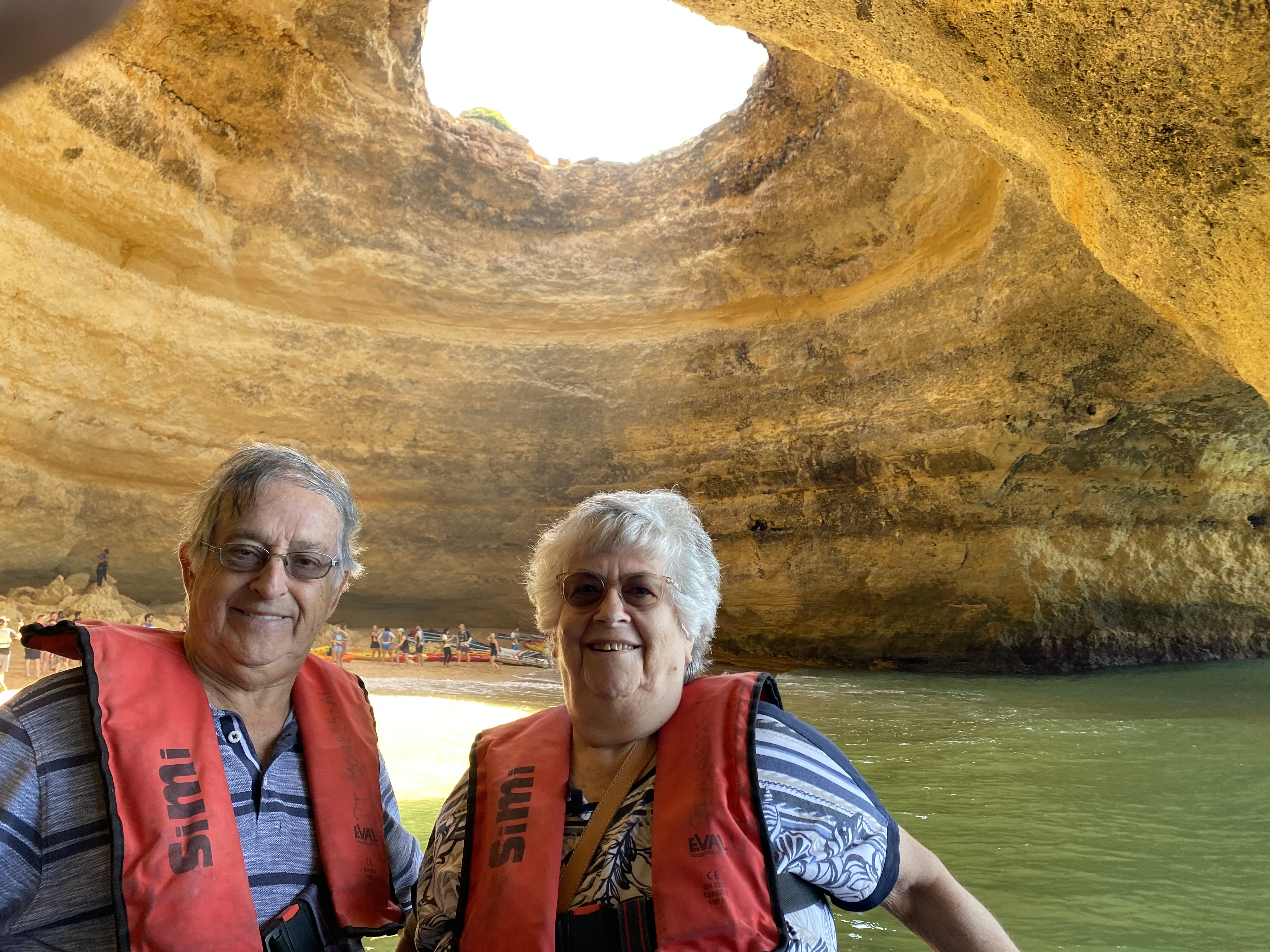 Our two-hour sortie on a 20-seat catamaran must rate highly with expeditions we (wife Linda has been on all including this one) made in the past including under Niagara Falls, Iguassu on the Argentine/Brazil border and also the Bay of Plenty in New Zealand, where rather like on this occasion your craft passes through a tunnel created out of the rock formation. Unlike our trip ‘down under’ we did not hit anything during the passages. If you take the trip make sure your vessel is no bigger than this size. The larger boats cannot get in to allow holidaymakers to take a swim or land on the many beaches.
Our two-hour sortie on a 20-seat catamaran must rate highly with expeditions we (wife Linda has been on all including this one) made in the past including under Niagara Falls, Iguassu on the Argentine/Brazil border and also the Bay of Plenty in New Zealand, where rather like on this occasion your craft passes through a tunnel created out of the rock formation. Unlike our trip ‘down under’ we did not hit anything during the passages. If you take the trip make sure your vessel is no bigger than this size. The larger boats cannot get in to allow holidaymakers to take a swim or land on the many beaches.
The Benagil sea caves started forming about 20 million years ago and are made up of Miocene limestone sitting on much older rocks created in the Mesozoic era, when dinosaurs ruled the earth. As we meandered along, passing many openings, they seemed to stretch for miles culminating with the Praia de Benagil beach and resort area. Some keen tourists went for a swim. If you are on an Algarve vacation put it on your list of things to do.
www.visitportimao.com/en/region-portimao
LISBON’s cruise terminal is well positioned just a few hundred yards from Praça do Comércio, transport-wise the centre of the city. The square is dominated by the bronze equestrian statue of Joseph I of Portugal (1714–1777), the monarch who presided over the city’s rebuilding following the Great Earthquake of 1755.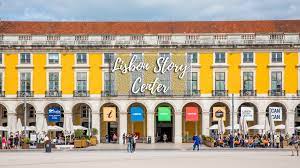 Well worth a visit is the Lisboa Story Centre which is opposite the statue. The audio tour takes about one hour with an interactive technology-based audio guide relating the main events in the city from past to present. This is produced in a playful and interactive way whilst respecting the historical accuracy that a city with Lisbon's past deserves. Just be careful of school groups who tend to linger at the most interesting sections.
Well worth a visit is the Lisboa Story Centre which is opposite the statue. The audio tour takes about one hour with an interactive technology-based audio guide relating the main events in the city from past to present. This is produced in a playful and interactive way whilst respecting the historical accuracy that a city with Lisbon's past deserves. Just be careful of school groups who tend to linger at the most interesting sections.
Located on the north side of the square is the Rua Augusta Arch that gives way to the boulevard Rua Augusta and Baixa, Lisbon’s historic heart. Neoclassical architecture, built after the 1755 earthquake, now take in pedestrianised streets lined with traditional seafood restaurants and souvenir shops. The National Museum of Contemporary Art, in the upscale Chiado area, shows Portuguese art from the mid-1800s to today, and nearby the Eiffel-style Santa Justa Lift offers city views.
From the square you can take the famous old British-built number 28 tram up some of the seven hills that Lisbon is famous for, or a train ride along the coast to Cascais past the 16th-century Belem Tower which serves as a monument to Portugal's Age of Discovery and highlights the local World Heritage sites.
A one day ship visit does not do Lisbon justice, but it is a taster encouraging you to come back. It is one of Europe’s finest cities.
www.visitlisboa.com/en
PORTO has been visited by BTN many times and it is always a pleasure to return. Since before Wellington the British have always been very welcome. 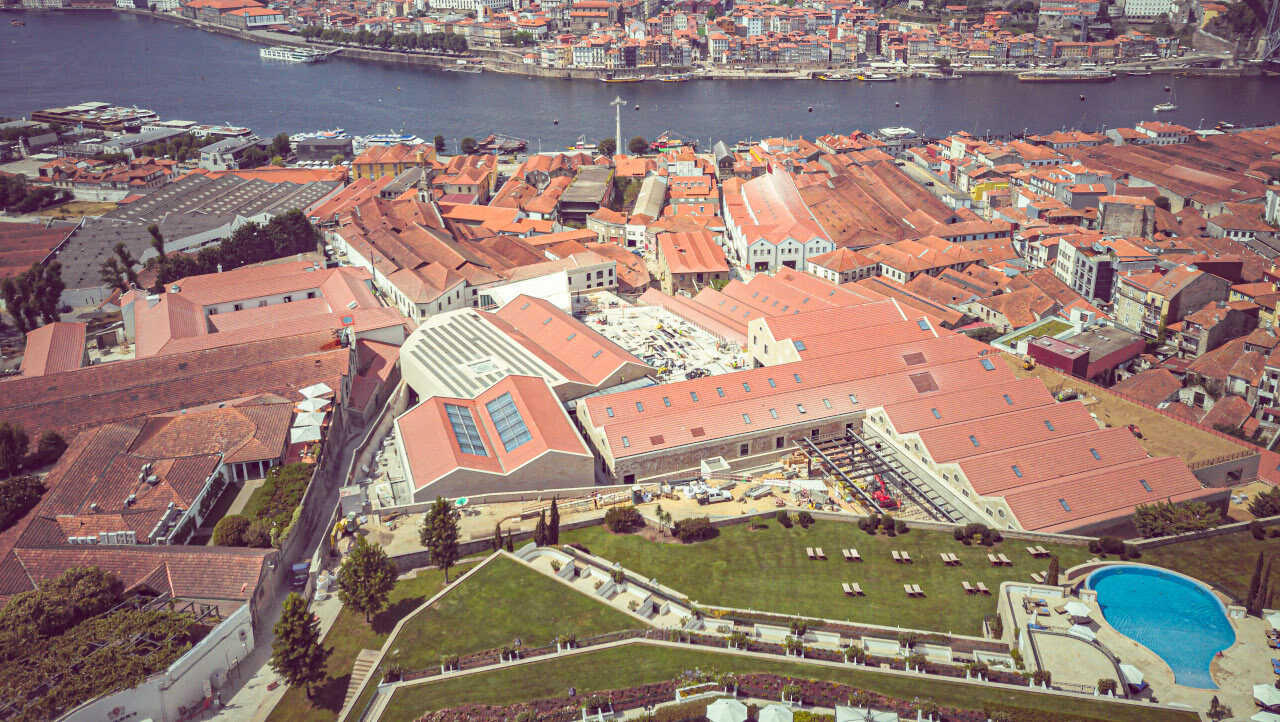 For deep sea ships its cruise terminal is in Leixoes about 30 minutes to the north of the city centre and the Douro River.
For deep sea ships its cruise terminal is in Leixoes about 30 minutes to the north of the city centre and the Douro River.
My target was the Yeatman Hotel once again, a simply wonderful breakfast overlooking the river and World of Wine (WOW), which opened in July 2021, not the best of timing.
Spanning over 420,000sq ft of converted and restored wine cellars, WOW was established to “help define Porto as a cultural destination through engaging educational experiences.” The wine-focused complex offers tourists seven museum experiences that tell the “story not only of wine” but also of “the city, its people and their adventures across the ages”.
True to its name, the project is a wine lover’s dream and has taken five years and £100m investment.
With more development under way currently available are:
- The Wine Experience, which explains how wine is made and how certain factors such as climate and grape variety affect production, and gives an overview of Portugal’s wine-producing regions.
- Porto Region Across The Ages (PRATA), which looks at the history, culture and people of Porto.
- One of the immersive museum experiences at WOW is Porto Region Across The Ages.
- Planet Cork, which allows visitors to explore the cork industry. Portugal is the world’s largest cork-producing country with over 50% of global production. Cork is in the Space Shuttle. Amazing.
- The Chocolate Story, a journey through the world of chocolate.
- The Pink Palace, an introduction into rosé wine.
- The Fashion & Fabric Museum, an exhibition of the textiles, fashion and jewellery industry in Portugal.
- The WOW Wine School, hosting a variety of daily and multiple-day workshops on Portuguese wine and gastronomy in partnership with the Wine & Spirit Education Trust.
- The Bridge Collection – 9,000 Years of Drinking, a display of the passage of humanity’s history through the evolution of drinking vessels from CEO Adrian Bridge’s personal collection.
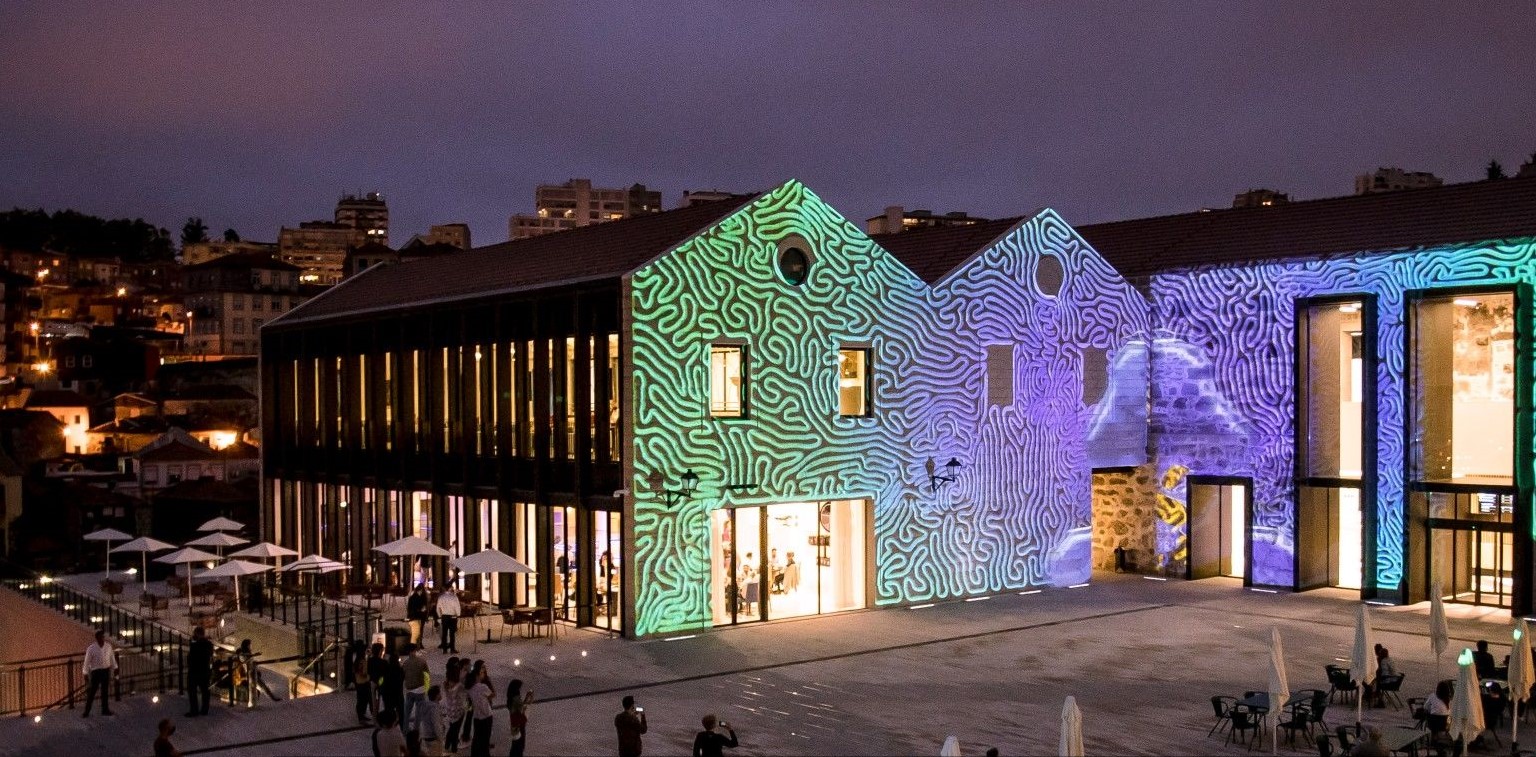 The cultural destination also serves up a bevy of dining options for visitors.
The cultural destination also serves up a bevy of dining options for visitors.
In the central square, guests can go to 1828 for fine dining; Angel’s Share for wine, other beverages and bites; Root & Vine for vegetarian fare; and Golden Catch for seafood.
www.visitportugal.com/en/destinos/porto-e-norte
VIGO in Galicia, north west Spain, is a popular stopping port for cruise ships both north- and south-bound from the UK and Channel ports. 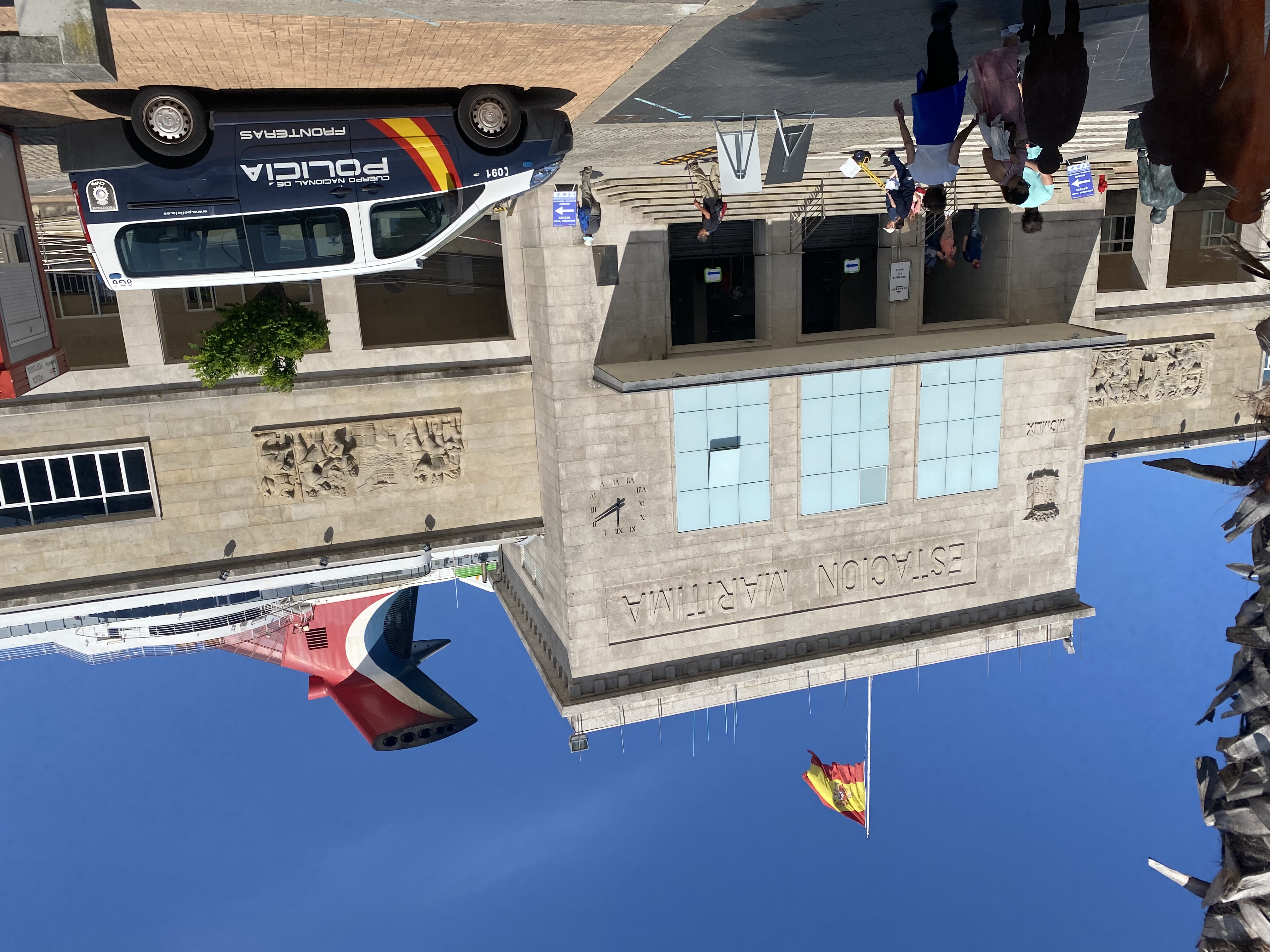 It has a fine purpose-built terminal with a short walk to the local bus tour, at just €7.5 great value for money and with an excellent English commentary. It takes about 90 minutes to go around but gives passengers a very good overall impression of Vigo, its parks and history. It is a hilly city but as with many is becoming more and more pedestrianised including mechanised covered walkways on some of the steeper streets. The open top bus is a hop-on hop-off offering stopping at some of the best sightseeing spots over the Vigo estuary and also taking in some fine beaches.
It has a fine purpose-built terminal with a short walk to the local bus tour, at just €7.5 great value for money and with an excellent English commentary. It takes about 90 minutes to go around but gives passengers a very good overall impression of Vigo, its parks and history. It is a hilly city but as with many is becoming more and more pedestrianised including mechanised covered walkways on some of the steeper streets. The open top bus is a hop-on hop-off offering stopping at some of the best sightseeing spots over the Vigo estuary and also taking in some fine beaches.
I took a quick look at the impressive conference centre, The Auditorium Congress Palace, featuring open spaces, a roof terrace perfect for a cocktail reception and a stylish auditorium for 1,700 people.
Soccer is the number one sport, Celta de Vigo again competing in La Liga, the top tier of Spanish football. Rival local city La Coruña now finds its home team in the National third division.
Carnival listed a whole host of tours, including into Portugal, just 20 miles to the south. Highlighted was Santiago de Compostela with its famous cathedral consecrated in 1211, whose elaborately carved stone facades open onto grand plazas within the medieval walls of the old town.
www.spain.info/en/destination/vigo
LA CORUÑA is just 100 miles north of Vigo and is its fierce rival.
For the casual (or ship) visitor the first impression is a harbour-side street full of apartments which all have glazed balconies (miradores) permitting the residents to admire the Atlantic Ocean whilst sheltering from the wind, hence the nickname 'Crystal City'. Strung out beneath these homes are many coffee houses facing the Peirao da Palloza thoroughfare along which the buses run. 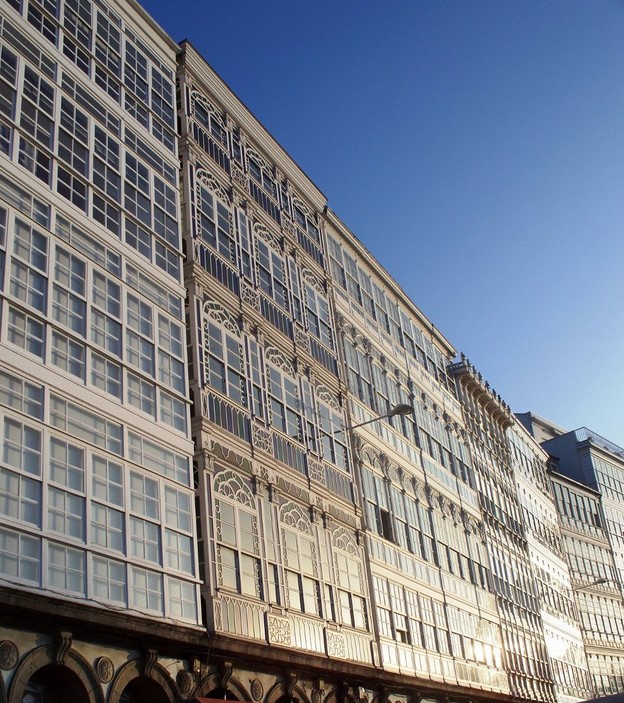 In the medieval old town is the arcaded Plaza de María Pita, surrounded by narrow pedestrianized lanes. In this square is the Estatua de María Pita, a statue of a 16th-century woman who warned the town of an invasion by Sir Francis Drake.
In the medieval old town is the arcaded Plaza de María Pita, surrounded by narrow pedestrianized lanes. In this square is the Estatua de María Pita, a statue of a 16th-century woman who warned the town of an invasion by Sir Francis Drake.
The Town Hall is located here also. It is an imposing neoclassical building built in 1917 and topped by allegorical sculptures representing the four provinces of Galicia. In this majestic building, which can be visited, you can see a beautiful central staircase, and a small, but interesting museum that traces the history of watches from the 18th-century to the present day and includes some very interesting pieces donated to the city by Antonio Rios, a local collector.
There were no circular tour buses working during our visit and so we took the local bus to pass by the Tower of Hercules, an ancient Roman lighthouse said to be the oldest functioning lighthouse in the world and declared a World Heritage Site by UNESCO in 2009.
www.spain.info/en/destination/a-coruna
GIBRALTAR has been a British overseas territory since the Treaty of Utrecht 1713 and is likely to remain so for the foreseeable future. Even Franco deferred from trying to take the fortress in WWII. He might have been a Spanish Putin, but he was not stupid! As things stand crossing the border is easy.  One problem for those arriving from Spain, or departing, is that the Gibraltar Airport runway crossing has to close whenever an aircraft lands and whilst a new tunnel is nearly complete it is still not finished. Questions were asked during the Carnival Pride visit, but no answer given.
One problem for those arriving from Spain, or departing, is that the Gibraltar Airport runway crossing has to close whenever an aircraft lands and whilst a new tunnel is nearly complete it is still not finished. Questions were asked during the Carnival Pride visit, but no answer given.
When it comes to cruise ships Gibraltar is a popular day stop, the ship terminal not affected by the runway crossing and whilst there are many taxis available it is only a ten-minute walk to Casement Square lined with numerous pubs, bars and restaurants. Next the busy Main Street, past the Governor’s Palace and on to the cable car and a ride to the top and the Barbary Apes feeding station. Make the effort to visit St Michaels Cave and a fantastic light show. With seating for around 400 it has hosted concerts and all manner of presentations.
A day visit is not enough. Layers of fortifications include the remains of a 14th-century Moorish Castle and the 18th-century Great Siege Tunnels, which were expanded in WWII. And Europa Point. On a clear day, views of North Africa can be seen across the Strait of Gibraltar including Ceuta and the Rif Mountains of Morocco.
www.visitgibraltar.gi
MALAGA was the final stop on the cruise. We then had one further day at sea to rest and recover, or for some just to party on the “Fun” ship.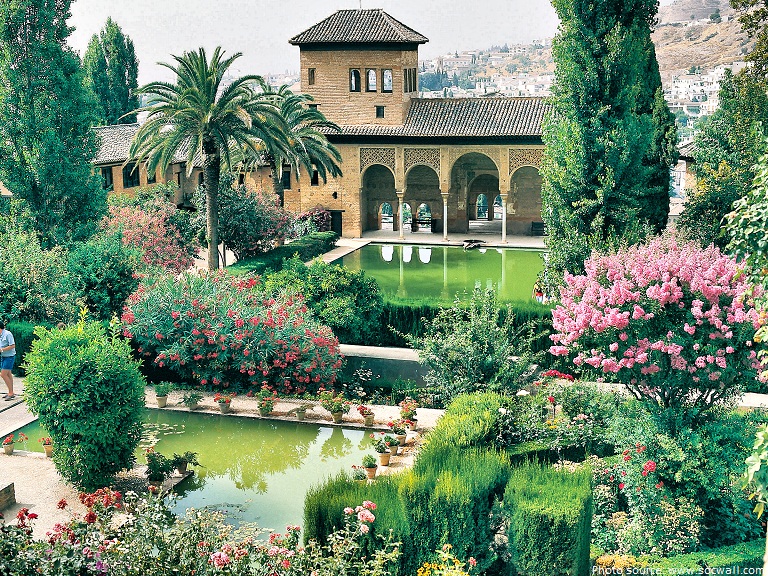 For us Granada and the Alhambra was the target, a two-hour coach ride (and a sleep on the way back – we were late but since it was a ship's official tour it did not matter).
For us Granada and the Alhambra was the target, a two-hour coach ride (and a sleep on the way back – we were late but since it was a ship's official tour it did not matter).
To walk around the Alhambra Palace and its wonderful gardens is strenuous, a reported 400 steps involved. It was worth it.
Constructed on a plateau that overlooks the city of Granada, the Alhambra was built chiefly between 1238 and 1358. After the expulsion of the Moors in 1492, much of the interior was ruined. Charles V, who ruled in Spain as Charles I (1516–56), rebuilt portions in the Renaissance style and destroyed part of the Alhambra in order to rebuild in an Italianate fashion. In 1812 some of the towers were blown up by a French force during the Peninsular War and the rest of the buildings narrowly escaped the same fate. In 1821 an earthquake caused further damage to the complex. An extensive repair and rebuilding programme was undertaken during the whole of the 18th-century. Additional restoration and conservation work continues.
The wonderful park outside the palace was originally planted by the Moors with roses, oranges, and myrtles. Its most characteristic feature, however, is the dense wood of English elms brought there in 1812 by the Duke of Wellington during the Peninsular War.
Our tour took us into the Palace itself, one room after another. The Salón de los Embajadores (Hall of the Ambassadors), inside the Torre de Comares (Comares Tower), is the largest room in the Alhambra. It is 37ft (11m) square and is topped by a dome whose centre is 75ft (23m) high. This was the grand reception room, and the throne of the sultan was placed opposite the entrance.
Terraced gardens, pools, and fountains combine to enchanting effect in the Patio de la Acequia (Court of the Irrigation Channel), named for the channel that supplies its water. An open air theatre within the complex occasionally offers international performances of music and dance.
The Alhambra was designated an early UNESCO World Heritage site in 1984 (expanded in 1994). It was a fine way to end a series of engaging visits.
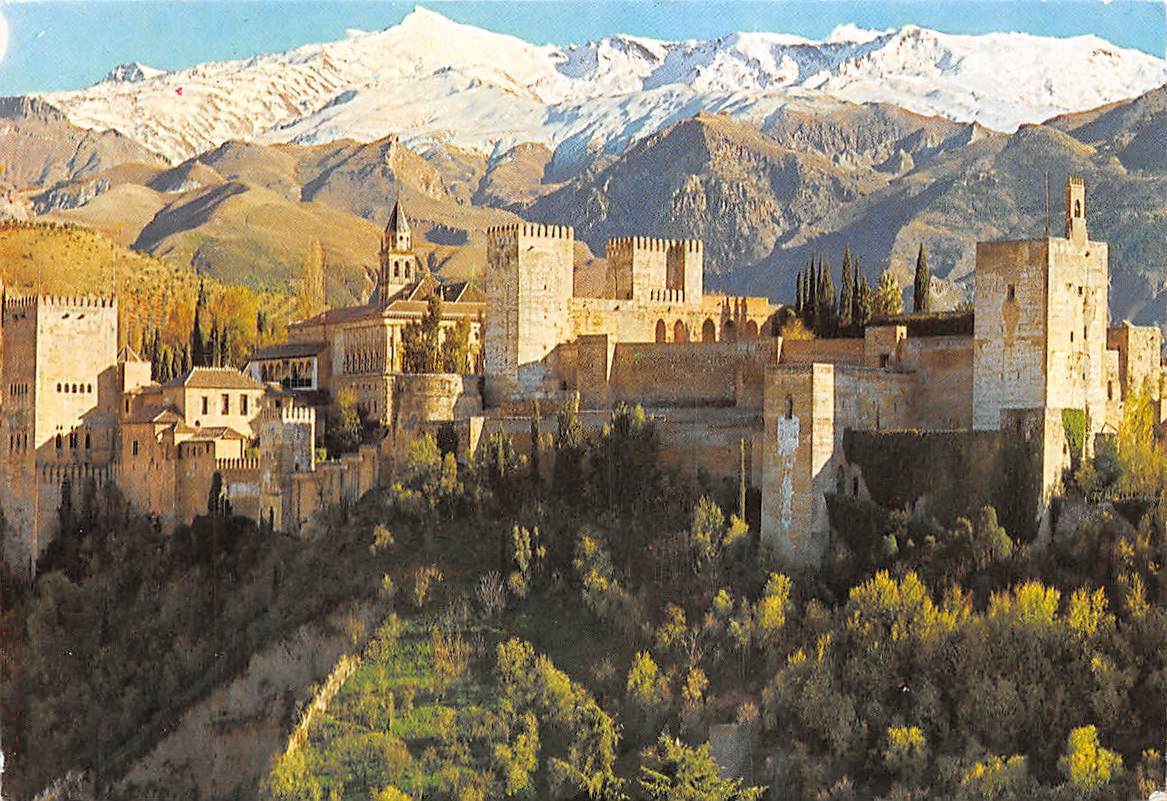
www.spain.info/en/destination/malaga/
OUR READERS' FINEST WORDS (All times and dates are GMT)
All comments are filtered to exclude any excesses but the Editor does not have to agree with what is being said. 100 words maximum
